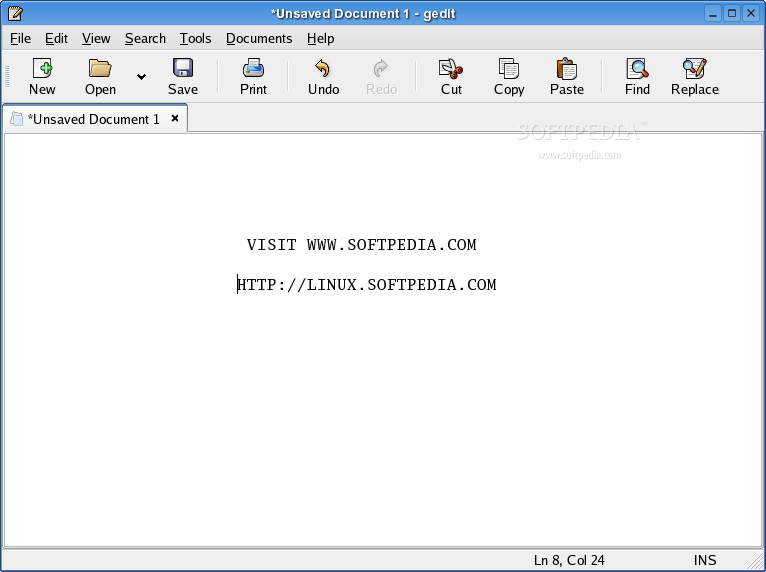
When you’ve finished editing the new file, you can copy it back over the original file. Replicating Ownership and Permissions to a New FIleĪ cautious way to edit system files–and therefore a commendable way to edit system files-is to copy the file and then edit the copy. This command opens gedit and loads the samba config file for editing. You get the command line prompt back straight away and you can carry on using the terminal window even when gedit is running. If you want to use the terminal window while gedit is still open, launch gedit with this command instead. The terminal window will wait for gedit to close before it returns you to the command prompt. It’s often named “Text Editor.” Just search the applications menu for “gedit.” Of course, you can also launch gedit from your Linux desktop’s application menu. You can get on with the task of typing up whatever you’re working on with no distractions. It’s an uncluttered and clean application window. The gedit text editor will appear shortly. To start gedit from the command line, type gedit and hit Enter. RELATED: What Does "Everything Is a File" Mean in Linux? Launching gedit It’s a handy tool for editing files when all you need is just enough editor to get the job done-without the learning curve of some of the power-house editors like vim. That includes Ubuntu, Fedora, Debian, CentOS, and Red Hat. The default GNOME text editor is gedit, so you should find it on any system with a GNOME desktop environment. You can read these files to learn more about the inner workings of your operating system, and you can edit them to change its behavior. Give gedit a try on Linux, or on whatever platform you’re using, because the chances are good that it’s a better choice than the default.While that’s not strictly accurate, text files are often used for system logs and configuration. But it is a great text editor for those in need of one, and sometimes that’s all that's required. Gedit isn’t meant to be everything to all users. You might find yourself delving deep into some unique log files or in need of a precise parser or linter, and you’ll move to a specialized application. Of course, there probably will be a task for which gedit isn’t the best tool. It is objectively simpler than many of its peers (such as Kate from KDE), and yet it still manages to meet 80% or 90% of your daily expectations.

Admittedly, this isn’t entirely unique to gedit, but it’s a useful trick to know, and it does work in gedit. After you’ve released the keys, you’re left with an underlined U, so type 1F427 followed by a space, and your Unicode entry is transformed into a friendly ?.
#LINUX INSTALL GEDIT CODE#
You usually have to look up the character code (unless you have some memorized, but who has available memory for character codes?) For instance, to render a penguin, press, and release Shift+Ctrl+U.

This is especially useful for coders or those who write in a markdown format (such as Asciidoc, reST, or CommonMark). These keyboard functions aren’t documented anywhere within gedit: But this simple text editor is hiding several exciting features you may not know about, even if you’ve been using it for years. On the surface, gedit is exactly what it advertises itself to be: a humble text editor that stays out of your way so you can type letters into a box on your screen.

Most of these options can also be set globally in the Preferences menu, which is found in the "hamburger" menu in the top right corner of the application. The bottom status panel provides quick access to a few common settings-what syntax highlighting schema you’d like to use, what tab width you prefer, and a few popular preferences such as line numbering, text wrapping, and so on. When you first launch gedit, you’ll get a minimalistic interface consisting of a text entry pane, a title bar, and a status panel at the bottom of the window. On Mac, you can install gedit using Homebrew or MacPorts.
#LINUX INSTALL GEDIT DOWNLOAD#
On Windows, you can download and install gedit from the Microsoft Store.


 0 kommentar(er)
0 kommentar(er)
